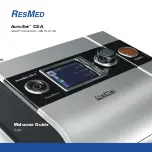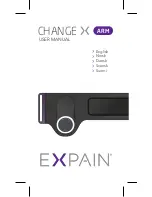
EN
ES
FR
IT
NL
DE
www.petsafe.net 15
14 www.petsafe.net
tools required
• Hammer
• Jig or Keyhole Saw*
• Phillips Screwdriver
• Slotted Screwdriver
• Drill
• 13 mm (½”) Drill Bit
• Level
• Tape Measure
• Masking or Painter’s Tape
• Duct Tape
• String
• Pencil
• Safety Equipment
• optional:
Silicone Adhesive
Installation in a non-Glass Door
Door
Step 1
Determine Cat flap Location
note:
Disconnect Power Adaptor from
Cat Flap (or remove optional rechargeable
battery if using) and disconnect the Motion
Sensor Wire from Exterior Frame prior
to installation.
Measure and mark your cat’s belly height on
the interior side of door. Draw a level line at
your cat’s belly height (
fig. 1a
).
Determine location for the Cat Flap. Draw a
vertical center line through the belly height line using a level (
fig. 1B
).
Helpful tip:
Mark belly height and vertical center line lightly with a pencil or on a piece of tape so marks can easily be erased or removed.
Step 2
preparing Door
Match the marked lines on the door with the lines on the cutting template. Tape the cutting template in place and
carefully trace cutting template. Make sure to trace underneath tape and connect the corners. Remove the cutting
template and any excess tape from the door (
fig. 2a
).
*
With appropriate blade type and length; example, a metal door would require a blade for metal.
1a
1B
notICe
• Read this entire guide prior to cutting or modifying an
opening in your door or wall. Do not proceed with cut-out
or installation until your Cat Flap is assembled, powered
up, programmed for your cat, and all steps under
“Prepare, Setup and Test” have been completed.
•
If homeowner’s door or other application is not level, the
Cat Flap must be installed level to swing properly.
2a
notICe
When applying cutting template there should be a minimum of 8 cm between the bottom and sides of
the door and the outer edge of the cutting template to maintain the structural integrity of the door.





































